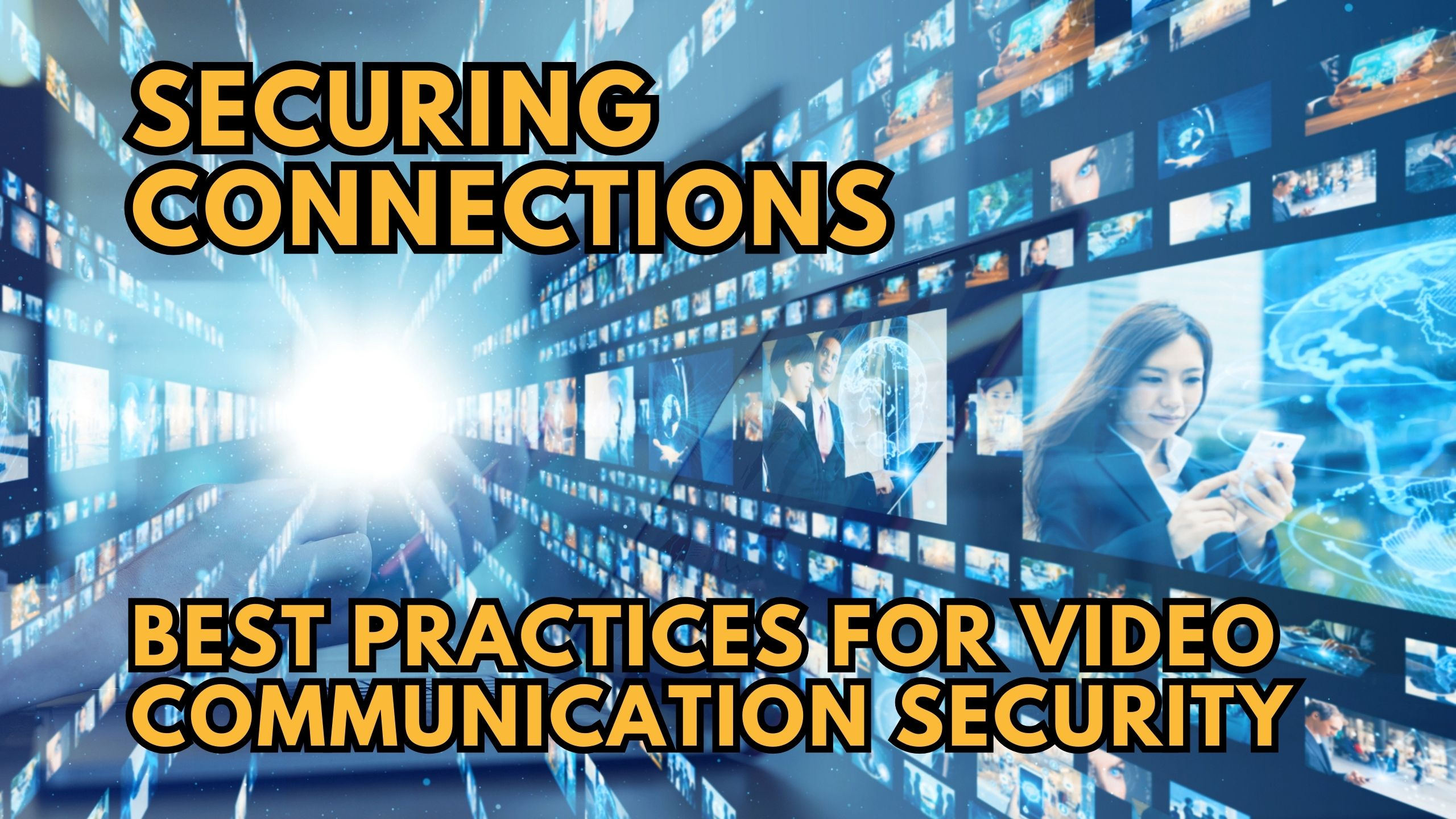Securing Connections: Best Practices for Video Communication Security
-


Video communication has become an essential part of both personal and professional lives. However, with great connectivity comes increased risk. Implementing proper security measures is vital for protecting sensitive information. In this blog post, we will explore best practices for bolstering video communication security.
1. Secure Your Accounts
The foundation of security is using strong, unique passwords for all accounts associated with video communication services. Enable two-factor authentication whenever possible, which requires a secondary login step like an SMS code or authentication app.
1Password and LastPass are password managers that generate strong unique passwords and store them securely. Authy and Google Authenticator offer two-factor authentication through one-time passcodes.
2. Encrypt Transmissions
Encryption protects the contents of video calls and messages while in transit between devices. Widely-used services like Zoom, Microsoft Teams, and Skype automatically encrypt sessions using secure protocols like TLS and SRTP.
For maximum security, Wire provides end-to-end encrypted video conferencing and messaging for teams. Signal offers fully encrypted video calls for individuals. For a robust video recording platform, consider Riverside.fm for secure remote interviews and podcast recordings.
3. Limit Session Exposure
While sessions are encrypted, video communication still presents more exposure risk than other mediums. Follow need-to-know principles for sensitive topics, only discussing via video if visuals are absolutely necessary.
Mute records meetings securely with encrypted transcripts, allowing more flexibility for sensitive discussions. Otter.ai generates automated encrypted transcripts of video calls while still maintaining context of conversations.
4. Control Access
Protect meeting access with passwords, waiting rooms, and host controls. Disable guest sharing privileges to prevent unwanted content from being broadcasted. For team communication platforms like Slack, create private channels with member permissions adjusted appropriately.
Soapbox enables presenters to easily control audience capabilities during video sessions. Riverside.fm provides advanced permissions for secure remote interviews and podcast recordings. Explore more tools like these in our list of Video Communication tools.
5. Monitor Activity
Review account activity regularly to identify any unauthorized access attempts. Video communication platforms should send notifications when new devices sign in or important account changes are made. Multi-factor authentication adds another layer of protection against potential breaches by requiring secondary authorization.
Intra delivers easy-to-interpret insights into usage across company video communication and collaboration platforms. Teramind provides more advanced employee monitoring with screen recording and analytics.
Conclusion
Securing video communication requires a multilayered approach addressing access, transmission, account controls, and monitoring. Prioritizing user awareness and utilizing all available security options provided by services is key to reducing risk. With proper precautions, video can be safely leveraged for maintaining connections between colleagues, friends and family
Unlock Free Member Savings on 100+ Top SaaS Tools
At Subscribed.fyi, we offer a single platform to compare, evaluate, and manage your subscriptions to top SaaS tools. Unlock free member-only deals, saving over $100k annually. Start managing your subscriptions today with a free account at Subscribed Deals.
Relevant SaaS Tools:
- 1Password
- LastPass
- Authy
- Google Authenticator
- Wire
- Signal
- Mute
- Otter.ai
- Soapbox
- Riverside.fm
- Intra
- Teramind
- Subscribed.fyi





